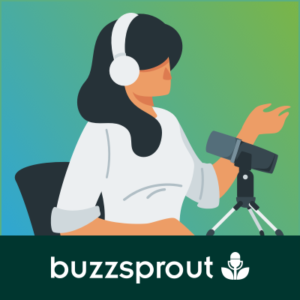Starting a Podcast Soon? I can Help! Already podcasting and want to know what I use? Read on!
I’ve podcasted for just under three years at the time of this writing. I’ve hosted Coffee in Space for that entire time and I’m starting another called The Honest Management Show in early 2023. When I started, I didn’t know anything. I soon learned the difference between dynamic and condenser microphones, the importance of hearing your own voice in your ear (so decent headphones), and the value of good software and a good host. This post is for folks hoping to start on a budget and don’t mind starting without some of the bells and whistles the big shows have. Oh, all these links are affiliate links. I may make a couple bucks if you use them.
First and foremost, the microphone. This isn’t going to shock anyone, but I recommend starting with a Samson Q2U. I talk about it a lot. It is maybe the most affordable dynamic microphone out there and has a hugely proven track record. I know there are others out there, such as the Audio-Technica ATR2100X. Both are basic starter microphones that happen to work magnificently well. Either would be fine for starting out.
If you’re a music producer or you otherwise are familiar with the Yeti Snowball or Blue Yeti, I want to caution you about using them for podcasting. Condenser microphones are difficult to master in an open room environment. They work fine in a booth, which is why musicians use them (so I hear). I used a snowball when I first got started and I’ll be honest, it wasn’t quite as bad as I had been told it would be. The Snowball, for example, is around $20 less than the Samson Q2U, so if you’re really strapped for cash, you can use it. You’ll just have to be careful not to pick up any outside noise or echo.
But if you can, I recommend going with a dynamic mic like the Q2U.
Headphones
Let’s talk headphones. I’ll be honest, I use a cheap pair I got at Wal-Mart after my dog ate the cord to my nicer Samson pair. The key isn’t to spend a ton of money with headphones unless you’re really persnickety about knowing exactly how you sound when you’re on the air. Most beginners aren’t at that level, so I feel confident in recommending the Samson SR850 or related products. One note for beginners: DO NOT USE BLUETOOTH connected headphones. Even the small lag you’ll have with them may throw off your editing and recording. I don’t recommend them for podcasting.
Samson created a podcast bundle to get you started. You get everything I talk about here and more by clicking THIS LINK or the picture above.
Hosting and Editing

Unless you have a crazy amount of bandwidth with your website host, you’ll need a host for your podcast. I use Buzzsprout, though I hear great things about LibSyn and Blubrry. Dave Jackson has a great show, by the way, called School of Podcasting, and he is an employee at LibSyn and often talks about it.
However, for my money (and yours), I recommend Buzzsprout. I’ve used them successfully for nearly three years with Coffee in Space and plan to continue using them with The Honest Management Show. There’s no reason I would change, so no need to recommend you go with anyone else. The stats are good, easy to read, and you can drill down several steps to learn more about your audience. They have free plans you can use to get started.
Using THIS LINK let’s Buzzsprout know I sent you, gets you at $20 credit if you sign up for a paid plan, and helps support my podcasting.
Now that you have a microphone, headphones, and a podcast host, you’ll need (IMO) editing software. If you’re an Apple user, you can utilize Garage Band for a lot of tasks. I did early on. However, at the recommendation of Thomas Umstaddt Jr over at The Novel Marketing Podcast, I checked out Hindenburg Pro and loved it. It was a one-time fee of $100 (a little more than that now) and I’ve used it on every episode since. Haven’t even looked at anything else in two years. Easy to use, especially if you’re not very experienced with audio editing.
Boom Arms are not a requirement, but they do free up space on your desk, so I switched to one after podcasting for about a year. I know it sounds like a broken record, but Samson makes a great boom arm that has worked wonderfully for me for a year. I want to emphasize the fact that you do not need a boom arm, but that it can be beneficial for clearing up your desk for notes, books, and your laptop. If you think that will help, get the Samson MBA38 and call it a day.
Resources
For learning more about podcasting, I recommend the following resources:

Eric also has a good newsletter that I receive and recommend. You can get that newsletter HERE.
School of Podcasting, a show by Dave Jackson. Dave has been in podcasting for years and clearly knows a lot about it. I’ve gotten a lot from his show.
Grow the Show, a podcast by Kevin Chemidlin. Sometimes, I’ll admit, he gets a little hypee, but overall, there’s tons to gain by listening to Kevin and his team. They also have a great Facebook Group to help you get better.
There’s so much more to know about podcasting, from how to create a good show, how to interview an expert, to editing, but this will get you started.
* Links in these show notes may be affiliate links. I may make a small percentage from your purchase. I would always want you to buy from a local, independent store, but if you are looking to use Amazon, I would appreciate you considering my links. Thank you!



